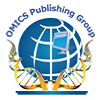Our Group organises 3000+ Global Conferenceseries Events every year across USA, Europe & Asia with support from 1000 more scientific Societies and Publishes 700+ Open Access Journals which contains over 50000 eminent personalities, reputed scientists as editorial board members.
Open Access Journals gaining more Readers and Citations
700 Journals and 15,000,000 Readers Each Journal is getting 25,000+ Readers
Indexed In
- Google Scholar
- RefSeek
- Hamdard University
Useful Links
Share This Page
Mineralized biomimetic collagen/alginate/silica composite scaffolds for tissue engineering
Hyeongjin Lee1, YongBok Kim1, SeungHyun Ahn1, Hojun Jeon1, Minseong Kim1, MyungGu Yeo1, KyoungHo Lee1, Gi-Hoon Yang1, Jae Yoon Lee1, YoungWon Koo1, MinJae Kim1, Suhon Kim2 and GeunHyung Kim1
Abstract
The natural biopolymers, collagen and alginate, have been widely used in various tissue regeneration procedures. However, their low mechanical and osteo inductive properties represent major limitations of their usage as bone tissue regenerative scaffolds. To overcome these deficiencies, biomimetic composite scaffolds were prepared using a mixture of collagen and alginate as a matrix material, and various silica weight fractions as a coating agent. The composite scaffolds were highly porous and consisted of interconnected pores, with a mesh-like structure. After incubation in simulated body fluid, various levels of bone-like hydroxyapatite (HA) on the surface of the composite scaffolds developed in proportion to the increase in silica content coating the scaffolds, indicating that the composite scaffolds have osteo-inductive properties. The composite scaffolds were characterized in terms of various physical properties and biological activities using pre-osteoblasts (MC3T3-E1). The mechanical improvement of a composite scaffold in compressive mode was ~2.4-fold in the dry state compared to the collagen/alginate scaffold. Cell proliferation on the composite scaffold was significantly improved by ~1.3-fold compared to the mineralized collagen/alginate scaffold (control). These results suggest that mineralized biomimetic composite scaffolds have potential for use in tissue regeneration.Biography
GeunHyung Kim from April 2008present is an Associate Professor at the Dept. of Biomechatronic Engineering, SKKU, South Korea. From Feb. 2005 March 2008, he was the Senior Researcher at Korea Institute of Machinery and Materials (KIMM), South Korea. From Mar. 2004 Feb. 2005, he was a Senior Researcher at Samsung Electronics Inc., South Korea. In Dec. 2003, he did his PhD in Mechanical Engineering from University of Wisconsin-Madison, USA.

 Spanish
Spanish  Chinese
Chinese  Russian
Russian  German
German  French
French  Japanese
Japanese  Portuguese
Portuguese  Hindi
Hindi